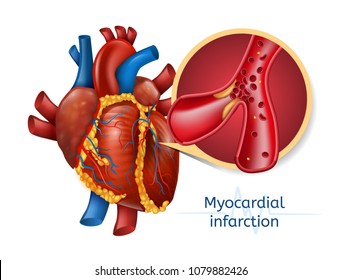Which statement is correct regarding beta receptors?
Beta 2 agonist decreases blood pressure
Beta 1 agonist increases blood pressure
Beta 2 agonist reduces blood pressure
Beta 1 agonist reduces blood pressure
The Correct Answer is B
Choice A: Beta 2 Agonist Decreases Blood Pressure
Beta 2 agonists primarily cause bronchodilation and vasodilation, which can lead to a decrease in blood pressure. However, this is not their primary function, and they are more commonly associated with the relaxation of smooth muscles in the airways.
Choice B: Beta 1 Agonist Increases Blood Pressure
Beta 1 receptors are primarily located in the heart. Activation of these receptors increases heart rate and contractility, which in turn increases cardiac output and blood pressure. Therefore, beta 1 agonists are known to increase blood pressure.
Choice C: Beta 2 Agonist Reduces Blood Pressure
Similar to choice A, beta 2 agonists can cause vasodilation, which may reduce blood pressure. However, this is not their primary therapeutic use, and they are mainly used for their bronchodilatory effects.
Choice D: Beta 1 Agonist Reduces Blood Pressure
Beta 1 agonists increase heart rate and contractility, leading to an increase in blood pressure. Therefore, this statement is incorrect as beta 1 agonists do not reduce blood pressure.
Nursing Test Bank
Naxlex Comprehensive Predictor Exams
Related Questions
Correct Answer is B
Explanation
Choice A Reason:
Oxygenation of the cells is a necessary process during reperfusion, but it is not the direct cause of reperfusion injury. The injury occurs due to the sudden influx of oxygen, which leads to the formation of reactive oxygen species (ROS) or free radicals. These free radicals cause oxidative stress and damage to the myocardial cells.
Choice B Reason:
Free radical formation is the primary mechanism behind reperfusion injury. When blood flow is restored to the ischemic myocardium, the sudden reintroduction of oxygen leads to the production of free radicals. These free radicals cause significant oxidative damage to the cell membranes, proteins, and DNA, exacerbating the injury to the heart tissue.
Choice C Reason:
An increased metabolic state can occur during reperfusion as the cells attempt to recover from ischemia. However, it is not the direct cause of reperfusion injury. The primary issue is the oxidative stress caused by free radicals, not the metabolic changes themselves.
Choice D Reason:
Lactic acid build-up is a consequence of anaerobic metabolism during the ischemic period, not a cause of reperfusion injury. During ischemia, cells switch to anaerobic metabolism, leading to lactic acid accumulation. However, once oxygen is reintroduced, the focus shifts to the oxidative damage caused by free radicals rather than lactic acid.

Correct Answer is C
Explanation
Choice A: Move Na Inside the Cell
The primary function of the Na-K pump, also known as the sodium-potassium pump, is to move sodium (Na) ions out of the cell, not into the cell. This pump actively transports three sodium ions out of the cell for every two potassium ions it brings in. Therefore, this choice is incorrect.
Choice B: Move K Out of the Cell
The Na-K pump moves potassium (K) ions into the cell, not out of the cell. This active transport mechanism helps maintain the necessary concentration gradients of sodium and potassium across the cell membrane, which are crucial for various cellular functions, including maintaining the resting membrane potential.
Choice C: Move Na Out of the Cell
The main function of the Na-K pump is to move sodium ions out of the cell. For every cycle of the pump, three sodium ions are exported out of the cell, and two potassium ions are imported into the cell. This process is essential for maintaining the electrochemical gradient across the cell membrane, which is vital for nerve impulse transmission, muscle contraction, and overall cellular homeostasis.
Choice D: Move Na and K Inside the Cell
This choice is incorrect because the Na-K pump does not move both sodium and potassium ions inside the cell. Instead, it moves sodium ions out of the cell and potassium ions into the cell. This active transport mechanism is crucial for maintaining the proper ionic balance and membrane potential necessary for various physiological processes.
Whether you are a student looking to ace your exams or a practicing nurse seeking to enhance your expertise , our nursing education contents will empower you with the confidence and competence to make a difference in the lives of patients and become a respected leader in the healthcare field.
Visit Naxlex, invest in your future and unlock endless possibilities with our unparalleled nursing education contents today
Report Wrong Answer on the Current Question
Do you disagree with the answer? If yes, what is your expected answer? Explain.
Kindly be descriptive with the issue you are facing.
